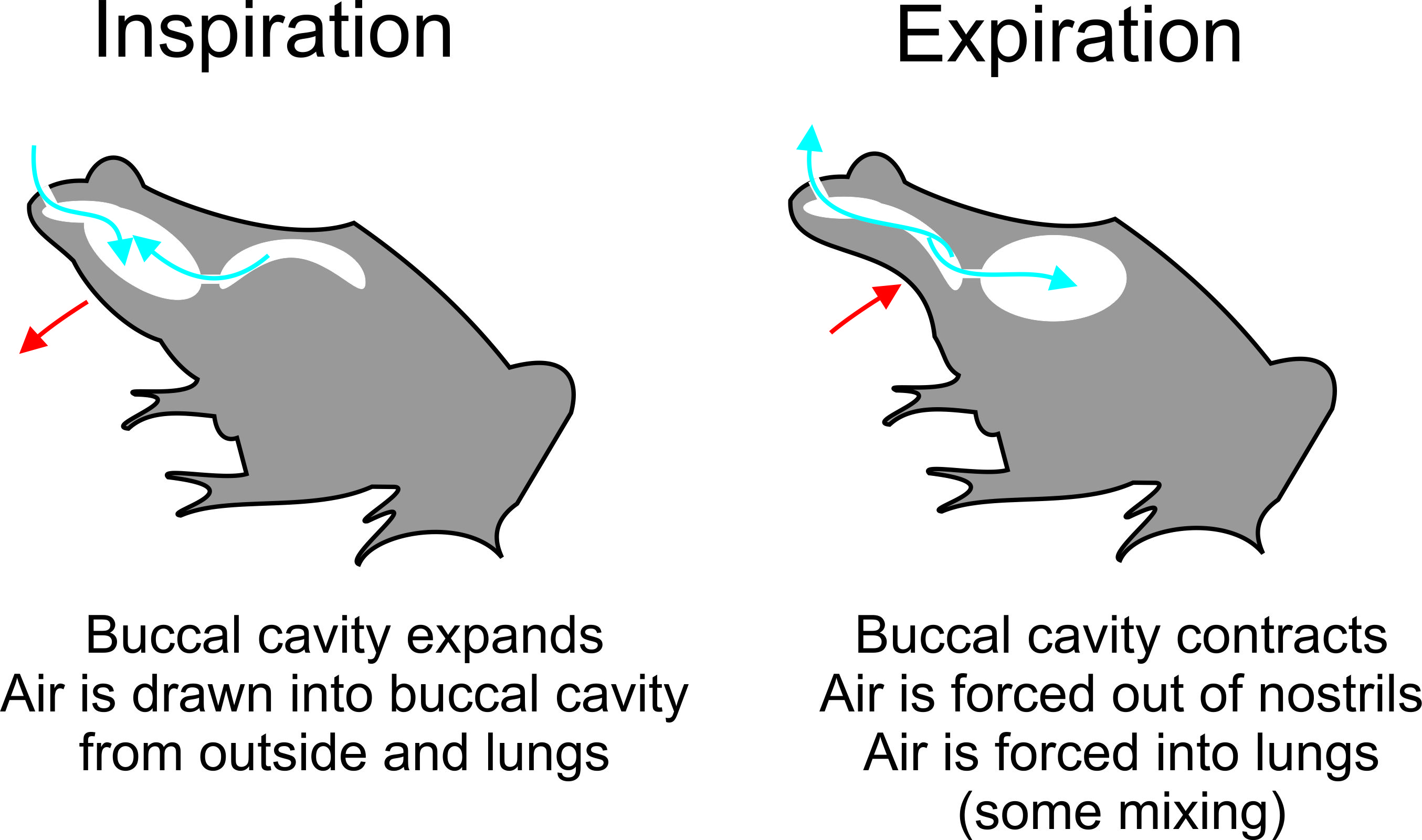buccal pumping on:
[Wikipedia]
[Google]
[Amazon]
Buccal pumping is "breathing with one's cheeks": a method of ventilation used in respiration in which the animal moves the floor of its mouth in a rhythmic manner that is externally apparent.Brainerd, E. L. (1999). New perspectives on the evolution of lung ventilation mechanisms in vertebrates. Experimental Biology Online 4, 11-28. http://www.brown.edu/Departments/EEB/brainerd_lab/pdf/Brainerd-1999-EBO.pdf It is the sole means of inflating the lungs in amphibians.
There are two methods of buccal pumping, defined by the number of movements of the floor of the mouth needed to complete both inspiration and expiration.


Four stroke
Four-stroke buccal pumping is used by some basal ray-finned fish and aquatic amphibians such as ''Xenopus
''Xenopus'' () (Gk., ξενος, ''xenos''=strange, πους, ''pous''=foot, commonly known as the clawed frog) is a genus of highly aquatic frogs native to sub-Saharan Africa. Twenty species are currently described within it. The two best-kno ...
'' and '' Amphiuma''. This method has several stages. These will be described for an animal starting with lungs in a deflated state: First, the glottis
The glottis is the opening between the vocal folds (the rima glottidis). The glottis is crucial in producing vowels and voiced consonants.
Etymology
From Ancient Greek ''γλωττίς'' (glōttís), derived from ''γλῶττα'' (glôtta), ...
(opening to the lungs) is closed, and the nostril
A nostril (or naris , plural ''nares'' ) is either of the two orifices of the nose. They enable the entry and exit of air and other gasses through the nasal cavities. In birds and mammals, they contain branched bones or cartilages called t ...
s are opened. The floor of the mouth is then depressed (lowered), drawing air in. The nostrils are then closed, the glottis opened, and the floor of mouth raised, forcing the air into the lungs for gas exchange. To deflate the lungs, the process is reversed.

Two stroke
Two-stroke buccal pumping completes the process more quickly, as is seen in most extant amphibians. In this method, the floor of the mouth is lowered, drawing air from both the outside and lungs into the buccal cavity. When the floor of the mouth is raised, the air is pushed out and into the lungs; the amount of mixing is generally small, about 20%.Brainerd, E. L. (1998) Mechanics of lung ventilation in a larval salamander, Ambystoma tigrinum. ''J. Exp. Biol.'' 201:2891–2901
Gular pumping
Gular pumping refers to the same process, but accomplished by expanding and contracting the entire throat to pump air, rather than just relying upon the mouth. This method of ventilation is inefficient, but is nonetheless used by all air-breathing amphibians and gular pumping is utilized to a varying extent by various reptile species. Mammals, in contrast, use thethoracic diaphragm
The thoracic diaphragm, or simply the diaphragm ( grc, διάφραγμα, diáphragma, partition), is a sheet of internal skeletal muscle in humans and other mammals that extends across the bottom of the thoracic cavity. The diaphragm is the ...
to inflate and deflate the lungs more directly. Manta ray
Manta rays are large rays belonging to the genus '' Mobula'' (formerly its own genus ''Manta''). The larger species, '' M. birostris'', reaches in width, while the smaller, '' M. alfredi'', reaches . Both have triangular pectoral fins, horn-s ...
embryos also breathe by buccal pumping, as mantas give live birth and embryos are not connected to their mother by umbilical cord or placenta as in many other animals.
See also
* Carrier's constraintReferences
{{DEFAULTSORT:Buccal Pumping Vertebrate anatomy